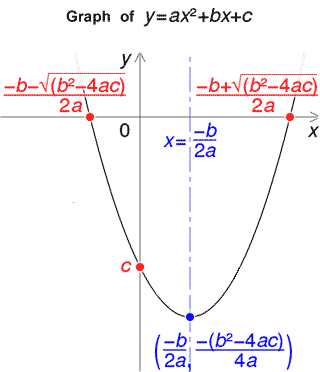Quadratic Formula Calculator
x = (-b ± √(b² - 4ac)) / 2a
Example: For the quadratic equation 2x² - 4x - 6 = 0:
Using the quadratic formula, x = (-(-4) ± √((-4)² - 4(2)(-6))) / (2(2))
= (4 ± 8) / 4, solving gives x = 3, x = -1.
What Is a Quadratic Equation?
A quadratic equation is a type of polynomial equation of degree two, generally written as:
ax² + bx + c = 0
In this formula:
x is the unknown variable
a, b, and c are known constants called coefficients
a must not be zero (otherwise, the equation becomes linear)
How to Solve a Quadratic Equation
Quadratic equations can be solved using several methods:
Factoring
Completing the square
Using the quadratic formula
Graphing
This guide focuses on the quadratic formula, one of the most effective tools for finding the solutions (or roots) of a quadratic equation.
The Quadratic Formula
To find the values of x in the equation ax² + bx + c = 0, use this formula:
x = (-b ± √(b² – 4ac)) / (2a)
Key Points:
The ± symbol means there are usually two solutions (roots).
The term √(b² – 4ac) is called the discriminant—it tells us:
If positive → Two real solutions
If zero → One real solution (repeated root)
If negative → No real solutions (only complex ones)
Deriving the Formula Using Completing the Square
To derive the quadratic formula, we begin with the standard quadratic equation:
ax² + bx + c = 0
Next, we complete the square to rewrite the equation in a form that makes it easier to solve. This involves creating a perfect square trinomial on one side of the equation:
x² + bx + c = (x – h)² + k
By simplifying the equation through completing the square, we can express the solutions for x in terms of the coefficients a, b, and c. This results in the well-known quadratic formula:
x = (-b ± √(b² – 4ac)) / 2a
The ± symbol indicates that there are two possible solutions, corresponding to both the positive and negative square roots of the discriminant (b² – 4ac).
Why the ± Symbol Matters
The ± in the formula exists because solving a square root produces both a positive and negative value. These two solutions represent the points where the parabola (the graph of a quadratic function) intersects the x-axis.
Understanding the Quadratic Formula and Its Applications
The solutions provided by the quadratic formula, known as the roots of the quadratic equation, represent the points where the corresponding parabola intersects the x-axis. Additionally, the quadratic formula helps determine the axis of symmetry of the parabola.
This method isn’t just a theoretical tool—it has many practical applications in fields such as physics, engineering, and finance. For example, the quadratic formula can be used to calculate areas, model projectile trajectories, and solve problems related to motion and speed.
Graphical Meaning
The solutions represent where the parabola (the U-shaped graph of a quadratic equation) crosses the x-axis. The formula also helps find the axis of symmetry, a vertical line splitting the parabola into mirror images.

.
